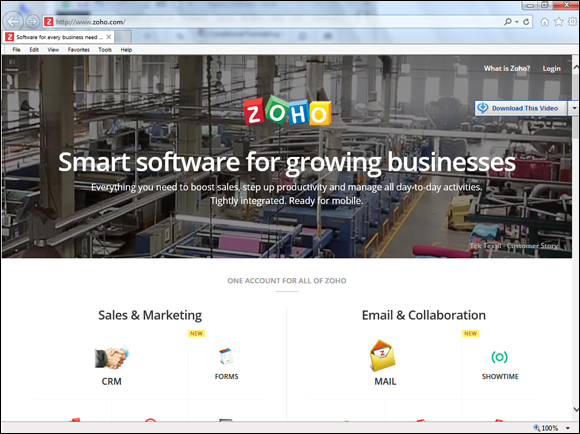Chapter 1
Looking Back at Your Business Model
IN THIS CHAPTER
 Reevaluating your business models
Reevaluating your business models
 Looking at refreshing your brand
Looking at refreshing your brand
 Understanding brand failures
Understanding brand failures
 Identifying new measures
Identifying new measures
As anyone who has been part of a business team knows, failure and change are part of the business lifecycle. You hear advice about “failing faster” and embracing change. But how do you go about it? This chapter of Book 9 covers the last of the Five Cs: Check-Back Analysis. (See Book 1, Chapter 1 for information on the other Cs.)
In this chapter, you reassess the efforts you document in Book 1, Chapter 3 about your business model and brand to determine whether you want to make changes. You want to see whether you can take additional steps that will lead to greater success.
If you wonder how often you should make reassessments, you should let no more than three months go by before you reevaluate what you’re doing. This amount of time gives you enough data to evaluate your results. The sooner you identify problems, the easier changing course will be. You don’t need to do a big overhaul each time you make an assessment. Rather, you should carefully assess your effectiveness on an ongoing basis. Some people prefer six-month intervals, but because things change so quickly on the web, you may fall behind before you realize it’s happening.
If you’re a solopreneur or small business, you know that speed is one of your greatest allies. If you’re a large company, you know that the quicker you call attention to a problem, the more likely you are to make a dent in the bureaucracy that exists. In the end, only you can determine the intervals that make sense for your company.
Validating Business Models
You want to understand your business model because it tells you what value your products have for your customers.
In Book 1, Chapter 3, you look at the dilemma of a fast-food company. The company needed to determine what “job” a customer hires its milkshake to do. The company found that customers buy milkshakes because they want something to do with their free hand during their long commute and that they want a drink that helps them stave off hunger until lunchtime. So this information told the company what it could do to make its milkshake do its job. But what does the information tell the company about its digital marketing?
The customers’ responses tell the company that producing content containing questions such as “How can you make your long commute less boring?” and “What can you drink on the way to work to keep yourself satisfied until lunch?” engages its audience. This type of content provides you with insight into the minds of your customers so that the content will be personal to them. These insights are critical to digital marketing success. Rather than take a shot in the dark about what your audience wants to know, you can deliver just what it wants and keep it entertained.
Looking at change
When you begin your business model reassessment, you first need to ask yourself whether you’re still in the same business you were several months ago. If you haven’t read Book 1, Chapter 3, this might seem like a strange question. But after you look at the issues concerning changes to business models and brand, you know that it’s not strange at all. Obviously, if things change, your content marketing strategy must change as well.
So what can signal that a change is needed? You might want to revise your model if any of the following have occurred:
- New competitors have jumped into the market. You suddenly have more competitors than you did before. To avoid being a commodity, you need to figure out how to differentiate your products and services.
- Your company has merged, been sold, or changed some other way. Such changes inevitably bring internal changes. If a merger is involved, you may need to accommodate new brands or eliminate products.
- The economy has shifted downward. Obviously, you have no control over this trend, but you need to understand how it will impact your business model. For example, will people now view your product as a luxury?
- Some of your products or services have changed or been discontinued. Obviously, this circumstance requires a rethinking of your model from top to bottom.
- Your profit margins are shrinking. Lower profits are a sign that you need to change something. Try to pinpoint what’s different in operations.
- Government regulations have been added. If your company has new regulations to comply with, your business model may be affected.
- Barriers to entry have changed. When you started out, there may have been high barriers to entry in your field. This means that someone starting a business like yours would be faced with high hurdles to get into business. With the advent of new technologies, the barriers to entry may have lowered, making more competition a certainty.
Revising your business model canvas
In Book 1, Chapter 3, you looked at working with the business model canvas by Alex Osterwalder and Strategyzer. You should return to it now and see whether any revisions are necessary. Using this tool should make it very easy for you to determine what’s changed since you filled it out. (Find it at https://strategyzer.com/canvas?_ga=1.164112764.256400004.1437491350.)
Make sure to ask yourself the following questions:
- Have you added or dropped any customer niches?
- Are some social media channels performing better than others?
- Have you lost or changed any critical vendors?
- Do you require more resources? If so, why?
- Have new expenditures become necessary?
Reexamining your brand
In Book 1, Chapter 3, you look at the following types of data to track and analyze: (1) general company measures; (2) brand awareness measures; and (3) brand loyalty measures. The good news is that because you pick specific measures to track, you have items to evaluate after several months.
When you look at the data you gather, ask yourself the following types of questions:
- Have any of the company measures changed significantly from your baseline numbers? For example, has your gross revenue taken a hit?
- Has your reach (the number of customers that you reach with your content) diminished for some reason? Has your publishing schedule changed?
- Have the number of customer purchases changed? Have you made changes to current products that would prompt a drop or an increase?
Enhancing your business models
After you reevaluate your business models, you should look at whether you can add or subtract something to enhance what you’re already doing. As you know, to grow a business, you can do three things: (1) increase the number of customers you serve; (2) increase the amount paid for a transaction; and (3) increase the frequency of the purchase. Using these three basic categories, here’s a look at what you might do to increase growth.
- Increase the number of customers you serve. Gaining customers requires that you do some of the following:
- Actively look for new niches in the marketplace.
- Look at your current audience to see whether you’ve attracted new customer niches based on something that has changed in the environment.
- See whether you can expand your reach to new domestic locations or countries.
-
Increase the amount paid for a transaction. Can you increase the price of your product? This is a tricky one, but can be done depending on how your product is perceived. Can you introduce a premium version?
Can you bundle more with your product? Try adding such things as training, webinars, and specialized content.
- Increase the frequency of the purchase. Can you get people to use more of your product? For commodity products like shampoo and toothpaste, this is a possibility. Increasing the frequency is tougher for online tools that don’t have built-in usage amounts, but trying to figure out ways to do it is worthwhile.
Reviewing Your Brand Status
When you look at brand measurement, you should consider aspects such as brand recall and brand recognition. Large corporations have brand managers whose job is to focus exclusively on this area. Smaller companies often find that the marketing team is the de facto group in charge of brands.
As discussed in Chapter 3, your brand is fixed in the mind of your customer. You don’t want to make changes if everything is working. You might, however, have to make changes if something in the brand environment has changed. Check to see whether any of the following is true:
- You’re in a rut or stagnant. If your customers and even your employees don’t have much enthusiasm for the brand content you’re producing, some kind of boost might be needed. You don’t need to do something drastic. Perhaps redesigning your ebook covers and the look of your blog posts will help.
- Your culture is not in line with your brand. Many companies understand that if their culture doesn’t support their brand, they will be perceived as inauthentic. Authenticity is a critical component of any brand today. For example, when customers buy something from Zappos (
http://zappos.com), shown in Figure 1-1, they know that customer service is paramount. The company culture tells employees what’s important and how they should treat their customers. In turn, this behavior gets identified with the brand. Zappos founder Tony Hsieh is famous for saying that “your culture is your brand.” If your culture is not aligned with your brand, you need to make changes.

FIGURE 1-1: Zappos.
Refreshing Visual Branding
When you make changes to your branding, don’t be surprised if customers balk. When people are used to something they like, they get nervous when you change it. They’re not looking at your brand in a strategic way as you are. They just decide whether they like the change. Be cautious and expect some dissent. You may even find that some critics come from within your company.
Understanding what your branding means
A classic branding mistake was made by Tropicana Orange Juice (owned by Pepsi). In 2009, the company decided to freshen its Tropicana Pure Premium orange juice container by removing the iconic orange with the straw in it, shown in Figure 1-2. Customers immediately reacted negatively. Tropicana received a barrage of letters, emails, and telephone calls. Some people said that the package looked like “a generic bargain brand” or a “store brand.” They demanded that the iconic branding be put back on the package.

FIGURE 1-2: Tropicana’s iconic orange juice label.
Management quickly complied with this request even though the company had just launched advertisements with the new packaging. The reason for complying? Even though the outcry was from a small percentage of the audience, it was composed of their most loyal customers. Smart. According to the New York Times article, “Tropicana Discovers Some Buyers Are Passionate About Packaging,” by Stuart Elliott (http://www.nytimes.com/2009/02/23/business/media/23adcol.html?_r=2&), Neil Campbell, president at Tropicana North America in Chicago, says that listening to your most loyal customers is the key to maintaining your brand power.
So what did the Tropicana marketers take away from their branding mistake? One of the answers lies with an understanding of what their branding signified to their customer. Clearly, the customers were buying “pure premium” juice. They wanted to buy and be recognized for buying something that was designed to communicate value.
When the package changed to resemble a less expensive brand, these customers became angry. They were going to be paying the same price for something that looked inferior. This kind of branding mistake shows that understanding the emotional value that your customer places on your brand is critical.
Surveying about brand awareness
When working on your brand reassessment, you may want to consider taking a survey to determine how well your branded content is performing. With luck, you have tracking data that shows you how well your content is performing on social media channels. But have you surveyed your customers to get their sentiments?
The survey process is very straightforward and many online tools are available for you to use. But a survey can be hard to get going unless everyone on your team is on board with the idea. Learning what customers really think can be scary. (Think about what you see on social media every day.) But if you really want data that doesn’t come through a filter, you need to survey your customers. Here’s the quick version of how to implement a survey:
- Get buy in from your managers for the purpose.
- Pull together a team to write questions or designate one person to collect what needs to be asked. Without a clear vision about what you want to know, the survey will not be useful.
- Pick a survey tool. (See the next section, “Locating a survey company.”)
- Create survey questions and get approval.
- Run the survey using the tool of choice.
- Analyze answers.
- Share data with everyone in the company who could use it to take action.
Locating a survey company
You can find lots of good online survey tools. Here are two you might want to consider:
- SurveyMonkey (
https://www.surveymonkey.com): See Figure 1-3. SurveyMonkey is a leader in the industry. It offers free and paid versions of its tools. Zoomerang is another well-known online survey company that merged with SurveyMonkey. All new signups are being directed there. - Zoho (
http://www.zoho.com/survey): See Figure 1-4. Zoho offers unlimited free surveys as well as other software tools.

FIGURE 1-3: SurveyMonkey.

FIGURE 1-4: Zoho.
 There may be no major changes to the business model canvas that affect your model. But you will probably have revisions that you want to note so that when you come back the next time, you are up-to-date. Vendor changes and social media channel wins, among other developments, can become very significant down the road.
There may be no major changes to the business model canvas that affect your model. But you will probably have revisions that you want to note so that when you come back the next time, you are up-to-date. Vendor changes and social media channel wins, among other developments, can become very significant down the road.